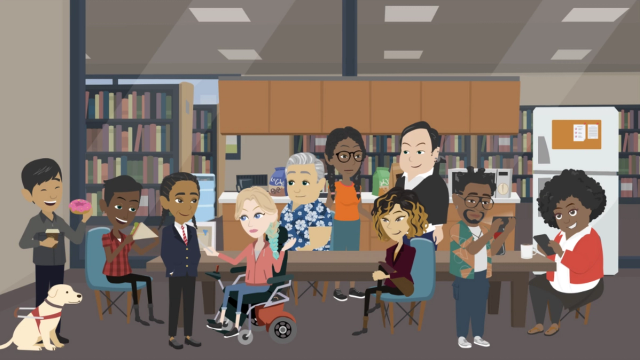Introduction to UDL and Equity Education Frameworks
This first module provides an overview of Universal Design for Learning (UDL) and the several equity and learner focused frameworks and practices we will be exploring throughout this course. Examining the intersection of UDL with initiatives such as antiracism, curriculum decolonization, and the social model of disability offers us unique opportunities to co-design inclusive learning environments where all our students belong and thrive.

The learner is central to any curriculum design. In this course – as the diagram illustrates – we begin by recognizing that “the learner” is in fact a multitude of learners – each with unique strengths and lived experiences. Surrounding the “learners” are the three key principles of UDL: Engagement, Representation, and Action and Expression. Using these principles, we can design accessible and inclusive learning environments that welcome and support all learners. However, one standpoint alone couldn’t possibly provide the breadth of perspective necessary to design curriculum for learners whose lives encompass a variety of identities and experiences. More frameworks and perspectives are needed. For this reason, the course has partnered UDL with antiracist and anti-oppression practices, course design principles, and critical digital pedagogy.
The overarching goal is to provide the framing and tools to help us work together, in community, to decolonize our curriculum and learning environments.
We invite you to begin a collaborative exploration of the ways these frameworks and viewpoints overlap, are unique unto themselves, and complement each other. Your engagement and creativity in thinking through these ideas are invaluable in developing visionary teaching and learning strategies for all!
Explore the UDL Certificate Library.
All of the frameworks and perspectives you will explore in this course are each a subject of study on their own.
Depending on your background and interest, you may want to investigate further using embedded links and exploring the UDL Certificate Library.
Here is what participants who have taken this course in the past have said about their “take away” learning:
Educator circle activityPast Participants Educator Circle
Complete this activity on the Universal Design for Learning website
Open activityInstructions
If using a mouse, trackpad, or touch device, click on the button over an educator in the group to open the educator slide. Use the next and previous buttons to navigate between educators and the close button to return to the group.
If using a keyboard or screen reader, press the tab key to focus on an educator in the group, and press space to open the educator slide. Once open you may use the Left arrow and Right arrow keys to navigate between educators. Press Escape to return to the group.
